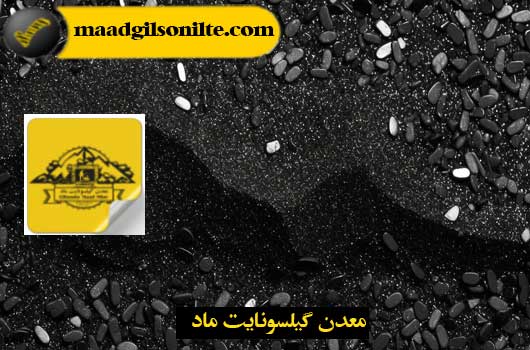
Porous asphalt is an innovative and sustainable pavement material that has received attention in recent years due to its unique characteristics and environmental benefits. Unlike traditional asphalt, porous asphalt is designed to allow water to pass through its surface and allow the underlying layers to promote effective stormwater management and prevent stagnant water from accumulating. The purpose of this article is to provide a comprehensive understanding of Sponge asphalt by examining its composition, benefits, installation, maintenance, environmental effects, applications, challenges, and future developments. Whether you’re a civil engineer, urban planner, or simply curious about sustainable infrastructure, exploring the full definition of porous asphalt provides valuable insights into this versatile and promising pavement solution.
Porous asphalt is not your ordinary pavement. It is a special type of asphalt that is designed to absorb water like a sponge. Unlike normal asphalt, which is impermeable and often leads to storm water runoff, fine and coarse aggregates and natural gilsonite are also used in the porous asphalt mixture.
Porous asphalt, like colored asphalt, may seem like a recent innovation, but it actually has a longer history than you might think. The development of sponge asphalt can be traced back to the 1970s, when researchers began to explore ways to reduce the negative environmental impacts of traditional pavements. Over the years, advances in technology and materials have improved porous asphalt, making it a more reliable and widely used solution for stormwater management.
The key to creating Sponge asphalt lies in the composition of its aggregates. Typically, a combination of larger and smaller aggregates and natural bitumen is used to create a void structure in the pavement. This allows water to flow through the pavement and into the underlying layers. The size and grading of these aggregates are carefully selected to ensure optimal discharge capability.
Adhesive materials such as natural bitumen are used in Sponge asphalt to hold the aggregates together and provide stability. However, the amount of binder used is lower compared to traditional asphalt, allowing for greater bonding between aggregates. Sometimes, additives are also used to enhance pavement performance, such as polymer-modified adhesives that improve durability.
The unique structure of porous asphalt gives it remarkable porosity and permeability characteristics. The holes in the pavement allow water to penetrate and temporarily store and prevent excessive runoff. Permeability of porous asphalt is determined by factors such as aggregate size and grading, as well as the compactness of pavement layers. These features help reduce pressure on stormwater systems and promote groundwater recharge.
One of the key benefits of Sponge asphalt is its ability to effectively manage stormwater. By allowing water to percolate through the pavement, it reduces runoff and reduces the load on drainage systems. This helps prevent flooding, erosion and pollution of natural waters.
Porous asphalt also offers improved road safety. Since water can be drained through the pavement, the risk of hydroplaning is significantly reduced and provides better traction for vehicles. This improves driving conditions, especially in rainy weather, and helps reduce accidents caused by slippery surfaces.
Another advantage of porous asphalt is its ability to reduce noise pollution. The structure of the free space of the pavement absorbs and repels noise, making it an attractive option for urban areas where traffic noise reduction is desirable. In addition, the filtration properties of Sponge asphalt can help improve air quality by trapping pollutants and enabling their natural processing in the subsoil layers.
Installing sponge asphalt requires careful planning and preparation. The existing surface must be thoroughly cleaned and prepared to ensure proper adhesion and longevity of the pavement. Gilsonite aggregates and bitumen are then mixed on site and poured using conventional asphalt paving equipment. A compressed tunnel is usually opened to traffic within a few hours.
To maximize the effectiveness of sponge asphalt, it is important to install a proper drainage system. This may include measures such as subsurface drains, subdrains, or infiltration basins, depending on the specific needs of the site. A well-designed drainage system ensures that excess water is effectively removed from the pavement and properly managed.
Like any other pavement, sponge asphalt requires regular maintenance to ensure its longevity. Routine inspections should be performed to identify any damage or clogging of cavities. If necessary, minor repairs can be made by removing the damaged area and replacing it with new sponge asphalt. Regular sweeping and cleaning also helps prevent clogging and maintain optimal drain performance.
So there you have it – a complete definition of porous asphalt! This is not just your average sidewalk. It is an innovative solution that helps manage storm water, improve safety, reduce noise pollution and improve the environment. If you’ve ever hit a road made of porous asphalt, you now know that there’s more to it than meets the eye.
sponge asphalt isn’t just great for improving drainage and reducing the risk of flooding. It also has significant environmental benefits that make it a sustainable option for paving projects.
One of the ways that sponge asphalt helps the environment is by reducing the urban heat island effect. This effect occurs when cities and urban areas become significantly warmer than the surrounding rural areas due to the abundance of heat-absorbing materials such as concrete and asphalt. Porous asphalt with its porous structure allows it to dissipate heat better and helps to cool down urban environments and combat the negative effects of the heat island effect.
Another key benefit of sponge asphalt is its ability to recharge groundwater and improve water quality. Traditional impervious pavements can lead to stormwater runoff and carry pollutants and contaminants directly into water bodies. sponge asphalt, on the other hand, allows rainwater to seep into the ground, where it can filter naturally and replenish groundwater supplies. sponge asphalt plays an important role in maintaining water quality and protecting our ecosystem by reducing storm water runoff.
To ensure the sustainability of porous asphalt, life cycle assessments are conducted to measure its overall environmental impact by considering factors such as raw material extraction, manufacturing processes, transportation, installation, use, and end-of-life management. In addition, there are various environmental certifications and standards that can be obtained to verify the environmental compatibility of sponge asphalt. These certifications ensure that materials meet specific environmental criteria and contribute to a greener and more sustainable future.
sponge asphalt is not just for highway construction. It has a wide range of uses and can be used in various settings to improve performance and aesthetic appeal.
Residential roads and streets can greatly benefit from sponge asphalt. By allowing water to drain from its surface, sponge asphalt minimizes the risk of standing water and improves driving conditions during heavy rainfall. This not only increases safety, but also extends the life of the pavement and reduces the need for frequent repairs.
Parking lots and corridors are prime candidates for Isogam with sponge asphalt. They often endure heavy rains that lead to potholes and potential hazards. By using porous asphalt, these areas can effectively manage stormwater, prevent water accumulation, and maintain a safer and more pleasant environment for vehicles and pedestrians.
Sports fields and recreational areas also benefit from the benefits of porous asphalt. Improved drainage helps keep these surfaces playable and safe even after rain, reducing the risk of accidents and injuries. Whether it’s a soccer field, tennis court, or playground, sponge asphalt ensures that outdoor activities can continue without disruption.
While sponge asphalt offers many benefits, it is important to recognize the challenges and consider the limitations it may have.
One of the challenges of sponge asphalt is the possibility of its clogging. Over time, debris and sediment can accumulate in the pores, reducing its permeability and compromising its efficiency. Regular maintenance such as periodic vacuuming and jetting is essential to prevent clogging and maintain optimal performance.
In cold climates, winter maintenance can be a challenge for sponge asphalt. Ice and snow can block the porous structure and reduce its ability to drain water effectively. However, with proper snow removal methods and the use of proper deicing agents, sponge asphalt performance can still be maintained even in winter conditions.
While the benefits of sponge asphalt are undeniable, it’s important to consider initial costs and long-term durability. Compared to traditional asphalt, sponge asphalt may have a higher initial cost due to specialized design and construction requirements. However, long-term savings from reduced maintenance and improved stormwater management can offset these initial costs. In addition, ongoing research and development is continuously working to increase the durability of porous asphalt, ensuring that it can withstand heavy traffic and last for years.
With the advancement of technology, the improvement potential of porous asphalt also increases. Here are some exciting trends and innovations to look out for:
Researchers and engineers are constantly working on developing new and improved mix designs for porous asphalt. These developments aim to increase the durability, permeability and overall performance of the material. By optimizing mix composition and structure, future porous asphalt installations will be even more effective in managing stormwater and providing long-term pavement solutions.
The integration of smart technologies has the potential to revolutionize the way porous asphalt is monitored and maintained. Sensors and data collection systems can be integrated into the pavement, providing real-time information about its condition, clogging levels and overall performance. This valuable data can enable proactive maintenance and help maximize the life of porous asphalt.
Research and development efforts are ongoing to address the limitations and challenges of porous asphalt. Scientists and engineers are investigating innovative materials, additives and construction techniques to enhance its performance. With investment in research and development, the future of porous asphalt looks promising, providing more sustainable and efficient solutions to our infrastructure needs.
As a result, porous asphalt offers a promising solution for sustainable infrastructure and stormwater management. Its unique composition and design offers numerous benefits including improved water drainage, increased safety, reduced noise and positive environmental effects. While there are challenges and limitations associated with its use, ongoing research and innovation continue to improve the performance and durability of porous asphalt.
As we look to the future, advances in technology and the continued adoption of porous asphalt in various applications have great potential to create more resilient and environmentally friendly urban environments. By embracing porous asphalt as a viable pavement option, we can contribute to a greener and more sustainable future.
Aerated asphalt is designed to perform effectively in a wide range of climates, including hot and cold regions. However, it is important to consider specific local conditions and consult with experts to ensure proper installation and maintenance practices are implemented for optimal performance.
While porous asphalt may require slightly more maintenance than traditional asphalt, the benefits it provides in terms of stormwater management and environmental sustainability far outweigh the additional maintenance efforts. Regular inspection, cleaning and occasional maintenance are essential to maintain its effectiveness and longevity.
Porous asphalt is generally not recommended for high-volume, heavy-traffic areas such as highways. It is mostly used for low-traffic roads, parking lots, corridors, sidewalks, and recreational areas. Appropriate consideration of traffic load and expected use is essential when determining the suitability of porous asphalt for a particular application.

